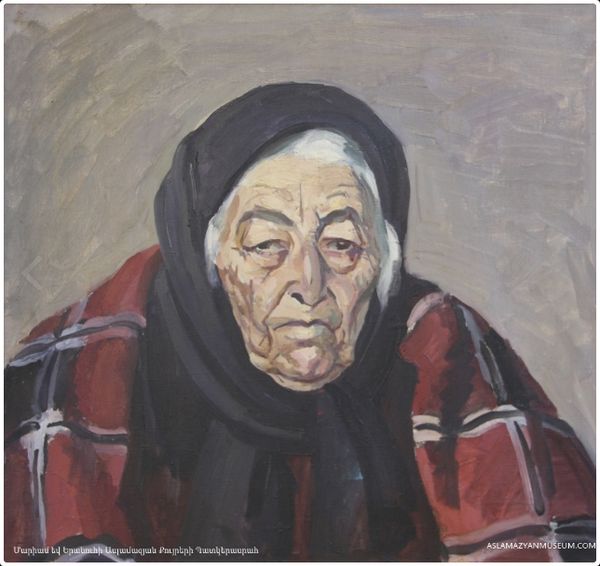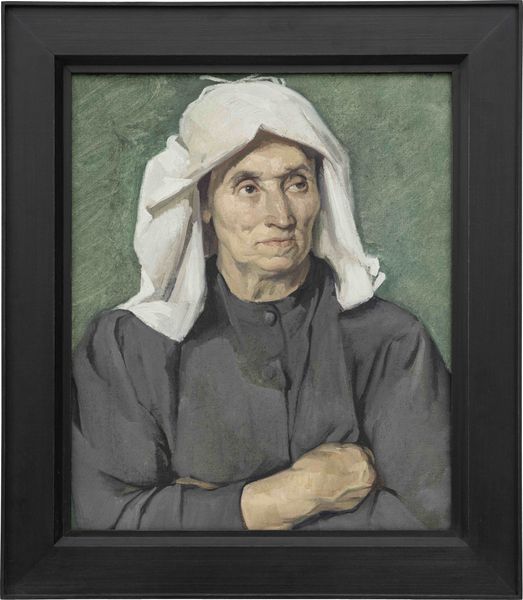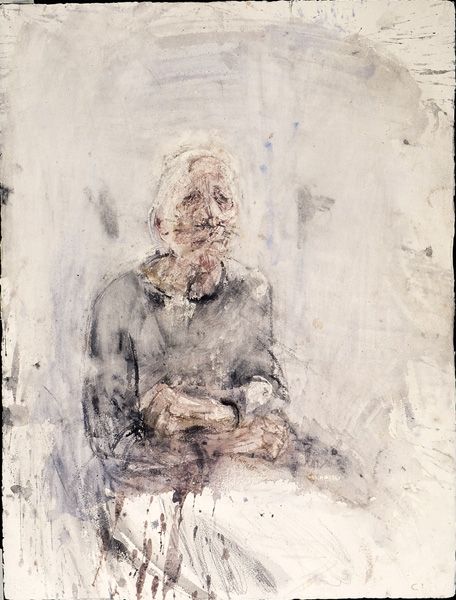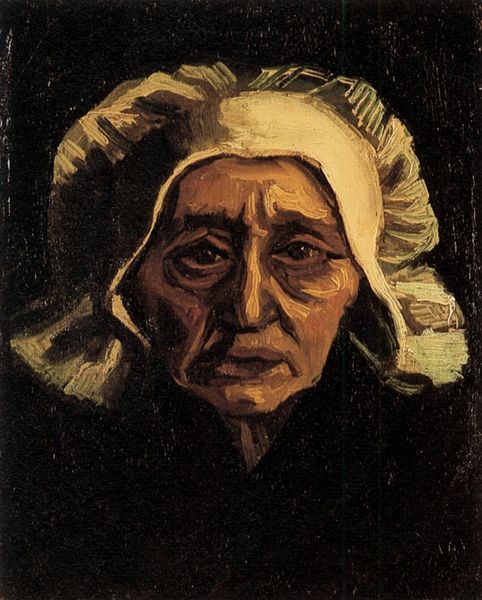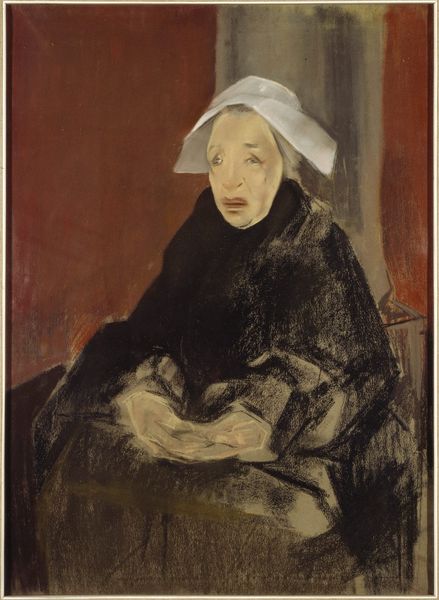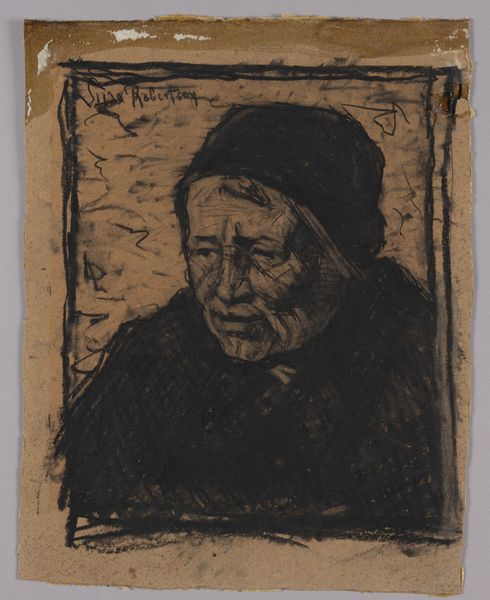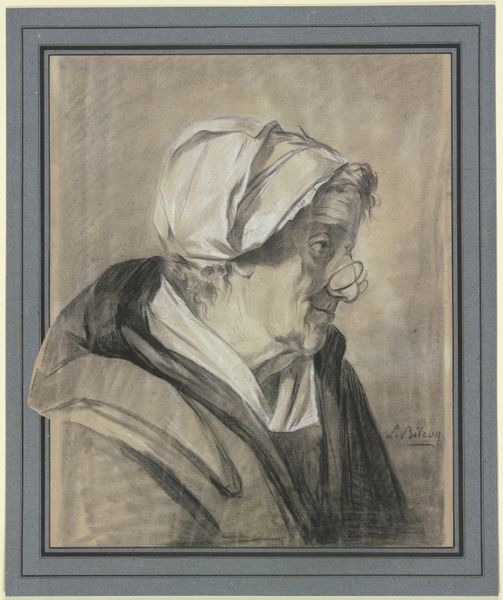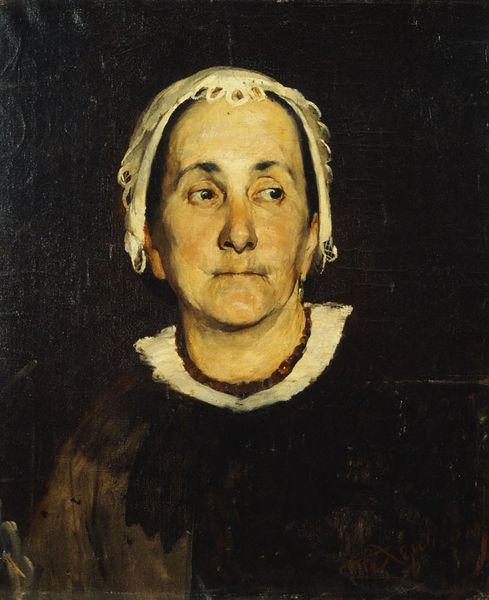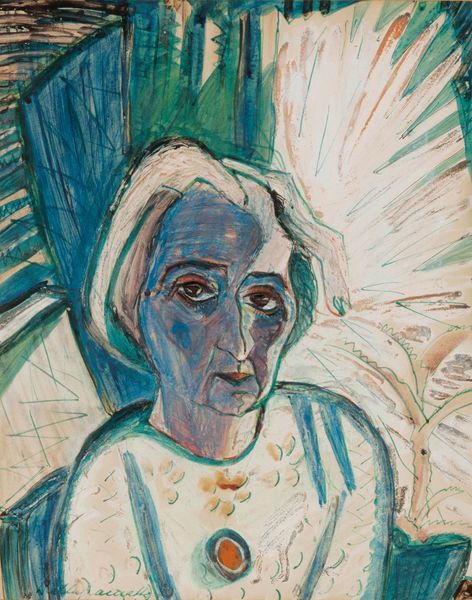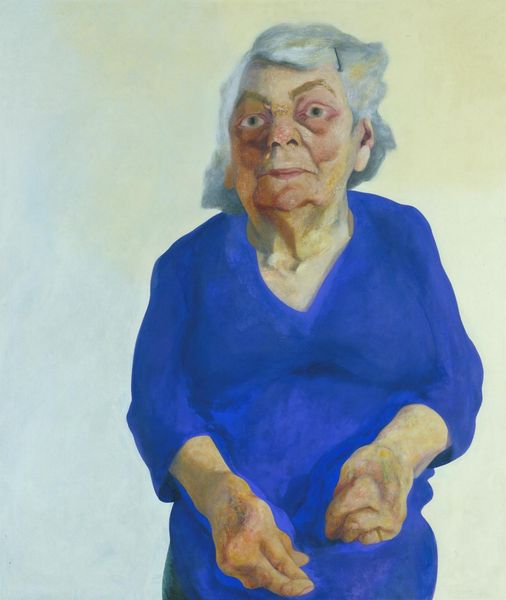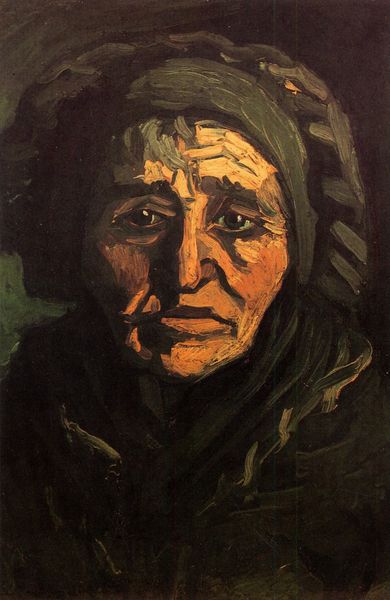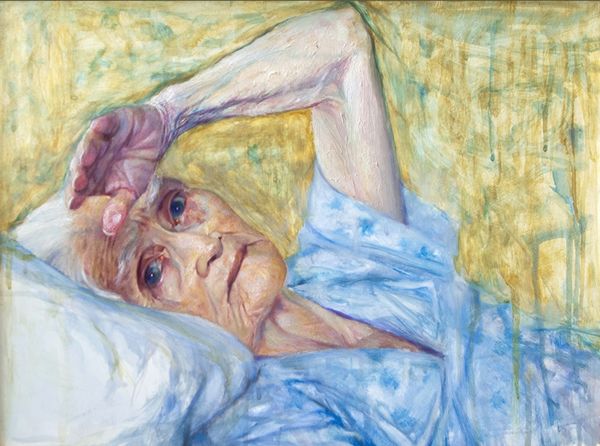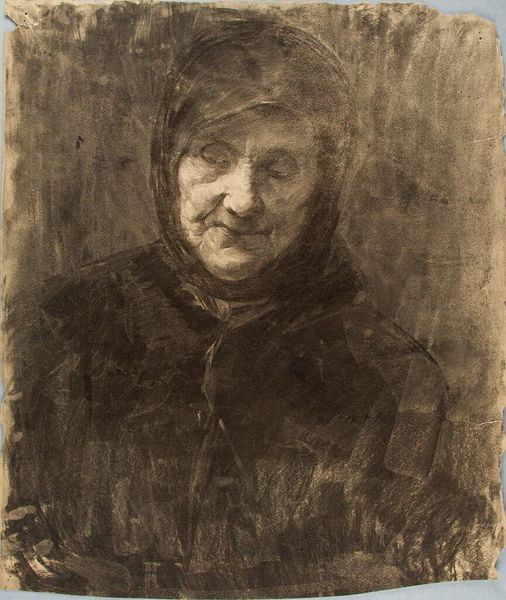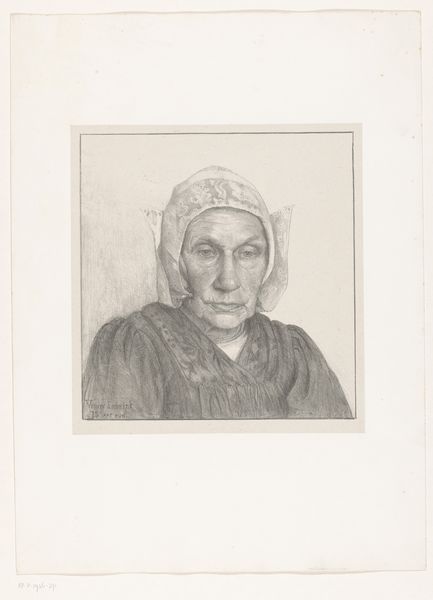
tempera, painting
#
portrait
#
new-objectivity
#
tempera
#
painting
#
realism
Dimensions: 55 x 46 cm
Copyright: Public Domain
Curator: Welcome. Before us hangs Ottilie W. Roederstein's "Ergebung," a tempera painting from 1918, currently held at the Städel Museum. Editor: Oh, this is intense. Immediately, I'm struck by the downward gaze, the slumped posture… she feels so weighed down. Like life itself is crushing her. Curator: Precisely. Roederstein’s masterful use of realism here presents an unflinching look at aging and, dare I say, resignation. Notice the composition: The subject dominates the frame, emphasizing her physical presence, yet the muted palette, primarily blues and grays, seems to diminish her vitality. Editor: It’s almost claustrophobic, isn't it? The muted tones… her hands clasped tightly. They speak of restraint and maybe quiet endurance. But what truly unnerves me is how real she feels, staring right through the sadness she must have carried throughout her life. I wonder if the year she painted this, so soon after the terrible war, has to do with all of this somber and hopeless feeling that overwhelms me. Curator: The formal restraint of New Objectivity is evident. While emotionally resonant, the painting maintains a certain level of detachment through the precision of form. The light falls harshly, revealing every line and crease, avoiding idealization, and thus creating a portrait that prioritizes truthfulness. Editor: So, she almost uses realism against itself. What may seem straightforward becomes… confrontational? It is fascinating how Roederstein conveys her emotional intensity just by arranging lines, colors, and shapes into what could seem just the accurate depiction of an old woman, if it wasn't much more. Curator: Roederstein does invite us to see beyond the surface by offering this incredibly austere rendition. Editor: What remains after a prolonged examination of Roederstein’s “Ergebung” is not despair but respect—an awareness of what she invites the viewer to share, but it doesn’t let us drown into such bleak outlook. Curator: An important addition to our understanding. This piece reminds us that Roederstein, through the language of form and material, articulates a subtle but significant commentary on humanity's shared experiences.
Comments
stadelmuseum about 2 years ago
⋮
World War I had a deep impact on Roederstein and her partner. The artist had to give up her studio in Paris and was largely cut off from her friends there, as well as from the French art market. Ever fewer commissions came her way from within Germany, forcing her to rely on customers in Switzerland. Yet the lack of portrait requests also gave her the freedom to devote herself to new pictorial subjects. In this period, she carried out several non-commissioned works depicting figures in pain, sorrow or melancholy—striking testimonies to a society traumatized by war and suffering. Roederstein rendered her model’s prominent facial features in dark, woodcut-like lines. And by simplifying and flattening the representation of the body and background, she drew all the more attention to the heaviness of spirit concentrated in the face. This emotional state—which is also mirrored in the choice of sombre, dissonant shades of colour—is the work’s main theme.Owing to the scarcity of painting materials and general financial constraints associated with the war, for Surrender Roederstein reused the canvas of a previously executed painting. The latter today forms the verso and, rotated 180 degrees, depicts a peasant woman wearing a scarf.
Join the conversation
Join millions of artists and users on Artera today and experience the ultimate creative platform.
